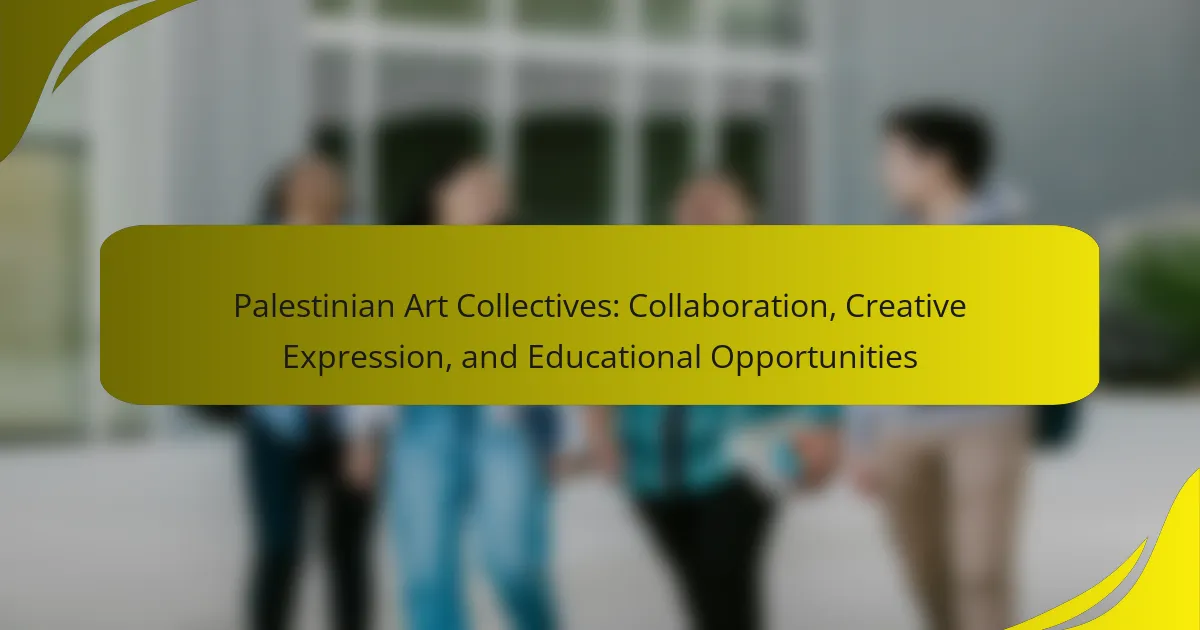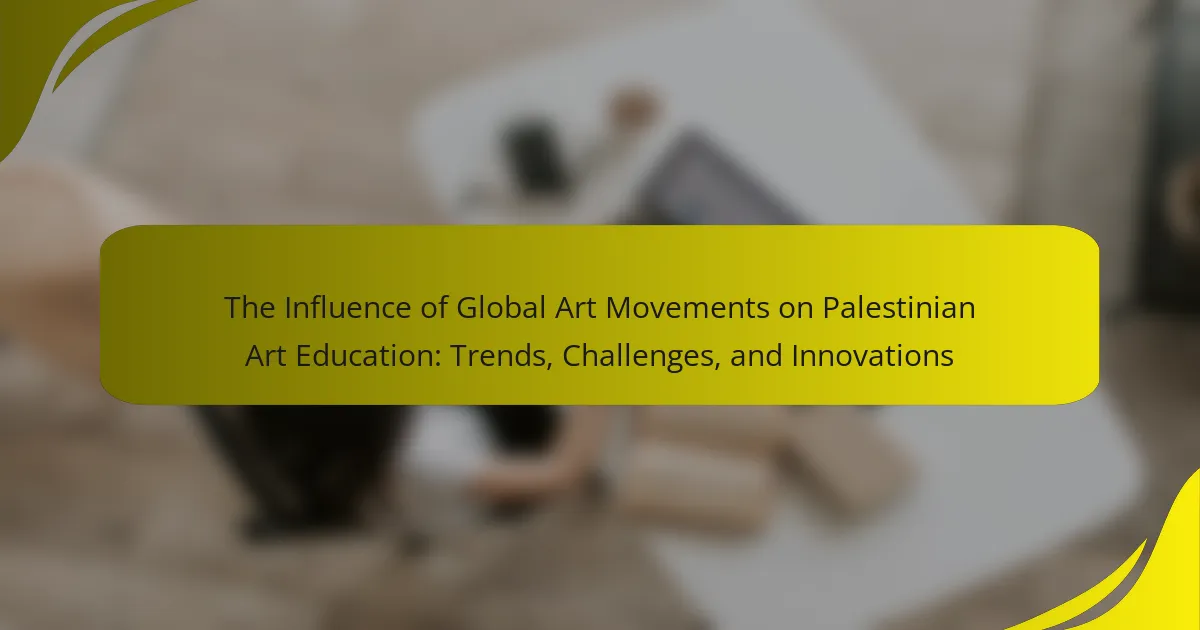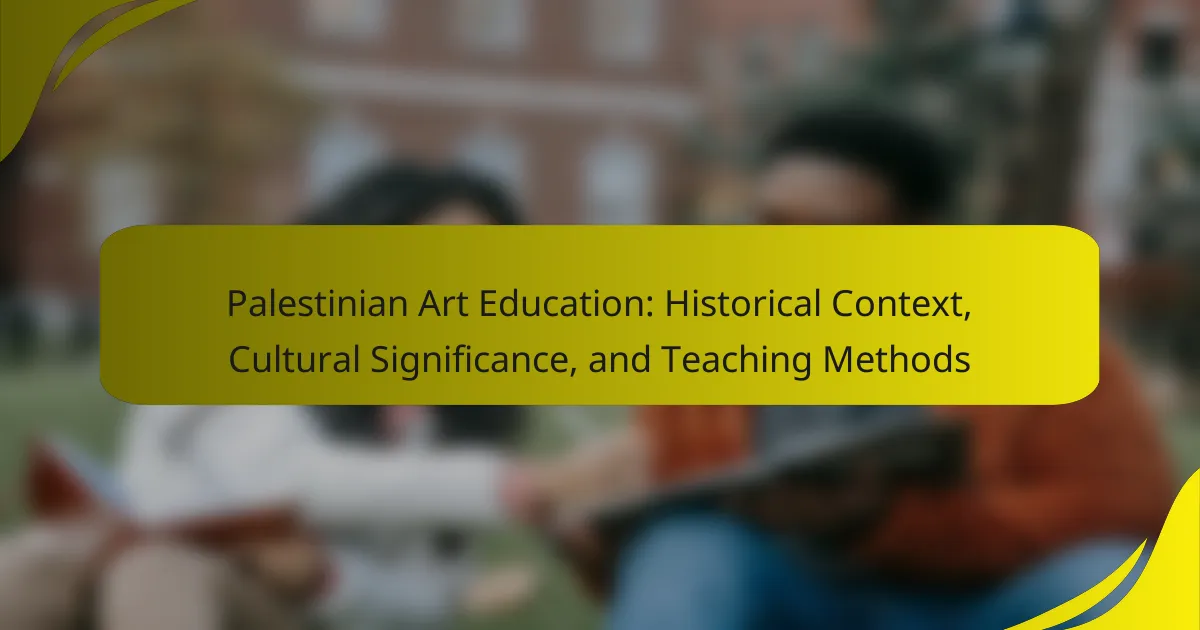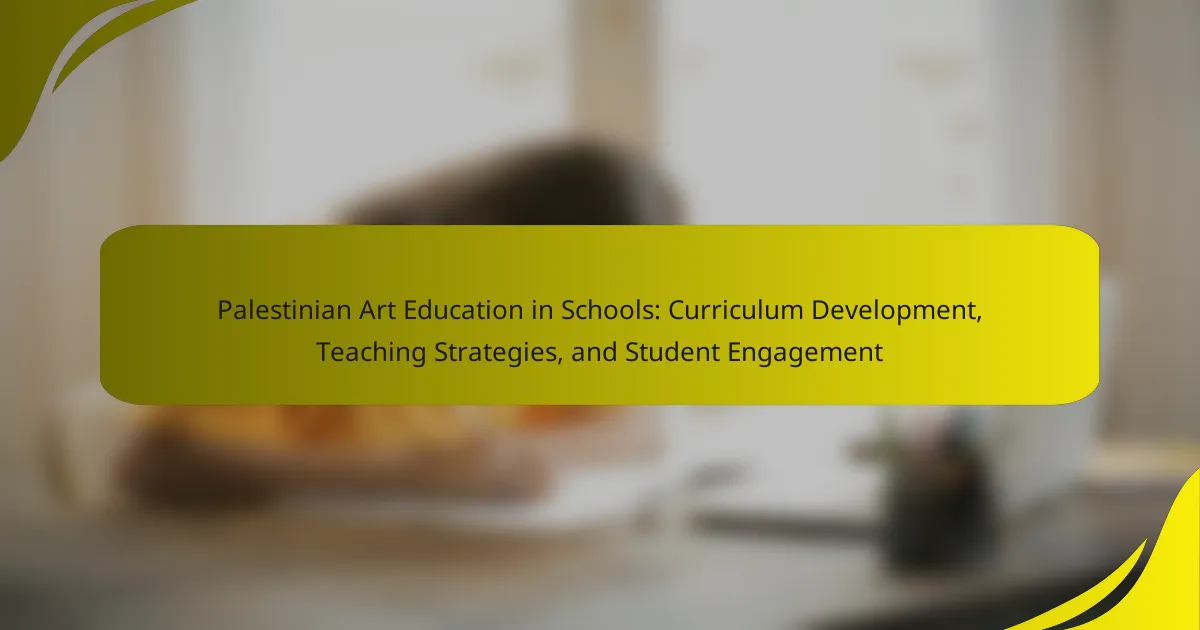Digital technology has transformed Palestinian art by enhancing its reach and accessibility through online platforms. Artists can now share their work globally, engage with international audiences, and participate in virtual exhibitions, which serve as alternatives to traditional galleries. Social media platforms play a crucial role in promoting Palestinian art, fostering cultural exchange, and facilitating direct interaction between artists and their audience. Additionally, online learning opportunities allow artists to develop new skills, while future trends include the integration of virtual and augmented reality, further enriching the artistic experience. This article examines the significant impact of digital technology on Palestinian art, focusing on online learning, virtual exhibitions, and the influence of social media.
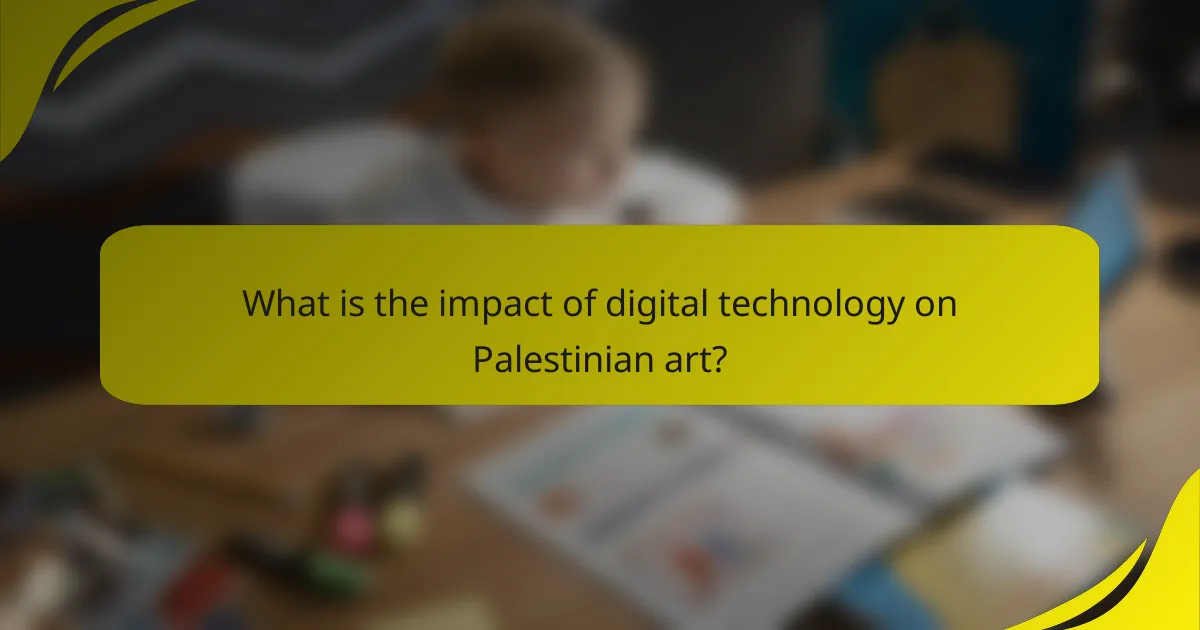
What is the impact of digital technology on Palestinian art?
Digital technology has significantly transformed Palestinian art by expanding its reach and accessibility. Artists can now share their work globally through social media platforms. This exposure allows for greater engagement with international audiences. Online learning has also emerged, enabling artists to acquire new skills and techniques remotely. Virtual exhibitions have become a viable alternative to traditional galleries, showcasing Palestinian art to a wider audience. The use of digital tools fosters collaboration among artists, promoting innovative practices. Overall, digital technology enhances the visibility and appreciation of Palestinian art on a global scale.
How has digital technology transformed the landscape of Palestinian art?
Digital technology has significantly transformed the landscape of Palestinian art. It has enabled artists to reach global audiences through online platforms. Social media serves as a vital tool for sharing artwork and engaging with viewers. Virtual exhibitions allow for immersive experiences without geographical limitations. Online learning resources have expanded artistic skills and knowledge. Digital tools facilitate collaboration among artists across borders. This transformation fosters cultural exchange and raises awareness of Palestinian art. The integration of technology has redefined traditional art practices and marketing strategies.
What are the key digital tools influencing Palestinian artists?
Key digital tools influencing Palestinian artists include social media platforms, graphic design software, and digital art applications. Social media platforms like Instagram and Facebook allow artists to showcase their work widely. They facilitate connections with global audiences and other artists. Graphic design software such as Adobe Photoshop and Illustrator enables detailed image creation and manipulation. These tools enhance artistic expression and allow for professional-quality outputs. Digital art applications, including Procreate and Corel Painter, offer innovative ways to create and edit artworks. They provide artists with flexibility and convenience in their creative processes. Together, these tools significantly shape the artistic landscape for Palestinian creators.
How do these tools change the way art is created and shared?
Digital technology tools significantly transform art creation and sharing. They enable artists to access diverse resources and techniques online. This access fosters collaboration across geographical boundaries. Virtual exhibitions allow artists to showcase work to global audiences without physical constraints. Social media platforms facilitate instant sharing and feedback from viewers. These tools also democratize art, allowing underrepresented voices to gain visibility. Data from the 2021 Digital Art Market Report indicates a 40% increase in online art sales. Overall, digital tools reshape traditional art paradigms, enhancing connectivity and engagement.
What role does online learning play in the development of Palestinian artists?
Online learning significantly enhances the development of Palestinian artists. It provides access to diverse artistic techniques and global art trends. Palestinian artists can participate in online workshops and courses led by international instructors. This exposure fosters skill development and creative expansion. Additionally, online platforms facilitate networking opportunities with other artists worldwide. Many Palestinian artists have utilized these resources to gain recognition beyond local boundaries. Research indicates that digital platforms have increased artistic visibility in the global marketplace. Consequently, online learning plays a pivotal role in shaping the contemporary Palestinian art scene.
How do online platforms enhance artistic skills among Palestinian youth?
Online platforms enhance artistic skills among Palestinian youth by providing access to diverse educational resources. These platforms offer online courses, tutorials, and workshops led by experienced artists. Youth can learn various artistic techniques and styles from the comfort of their homes. Social media also allows them to share their work and receive feedback from a global audience. Virtual exhibitions showcase their art, increasing visibility and opportunities for collaboration. Research indicates that these digital tools foster creativity and innovation among young artists. A study by the Palestinian Youth Association for Leadership and Rights Activation found that 75% of participants improved their skills through online platforms.
What are the challenges faced by artists in accessing online learning resources?
Artists face several challenges in accessing online learning resources. Limited internet connectivity is a significant barrier for many artists. In regions with unstable infrastructure, accessing online platforms becomes difficult. High costs associated with data and devices also hinder access. Many artists lack the financial means to invest in necessary technology. Additionally, language barriers can restrict access to resources primarily available in dominant languages. The overwhelming amount of information online can lead to confusion in finding quality resources. Lastly, some artists may lack the digital literacy skills needed to navigate online learning effectively. These challenges collectively limit the opportunities for artists to enhance their skills and knowledge through online platforms.
Why are virtual exhibitions significant for Palestinian art?
Virtual exhibitions are significant for Palestinian art because they provide a platform for visibility and accessibility. These exhibitions allow artists to showcase their work to a global audience. They overcome geographical and political barriers that often limit traditional exhibition opportunities. Virtual formats enable real-time engagement with audiences through interactive elements. This engagement fosters a deeper understanding of Palestinian culture and narratives. Additionally, virtual exhibitions can reach diverse demographics, enhancing cultural exchange. They also support emerging artists by offering them a space to present their work without the costs associated with physical exhibitions. Overall, virtual exhibitions play a crucial role in promoting and preserving Palestinian artistic expression.
How do virtual exhibitions expand the audience for Palestinian artists?
Virtual exhibitions expand the audience for Palestinian artists by providing global accessibility to their work. These online platforms eliminate geographical barriers, allowing viewers from around the world to engage with Palestinian art. Virtual exhibitions can showcase a diverse range of artists and styles, attracting a wider demographic. They often incorporate interactive elements, enhancing viewer engagement and appreciation. Additionally, social media promotion of virtual exhibitions can reach millions, further broadening the audience. According to a report by Art Basel and UBS, online art sales surged to $12.4 billion in 2020, highlighting the growing trend of digital engagement in the art world. This shift indicates a significant opportunity for Palestinian artists to connect with international audiences.
What technologies are used to create immersive virtual exhibition experiences?
Immersive virtual exhibition experiences utilize several key technologies. Virtual reality (VR) creates fully immersive environments for users. Augmented reality (AR) enhances real-world settings with digital overlays. 3D modeling software allows for the creation of detailed virtual objects and spaces. Interactive displays enable user engagement through touch and movement. Multimedia elements, such as video and audio, enrich the experience. Streaming technologies facilitate real-time participation in exhibitions. These technologies combine to deliver engaging and interactive experiences for audiences.
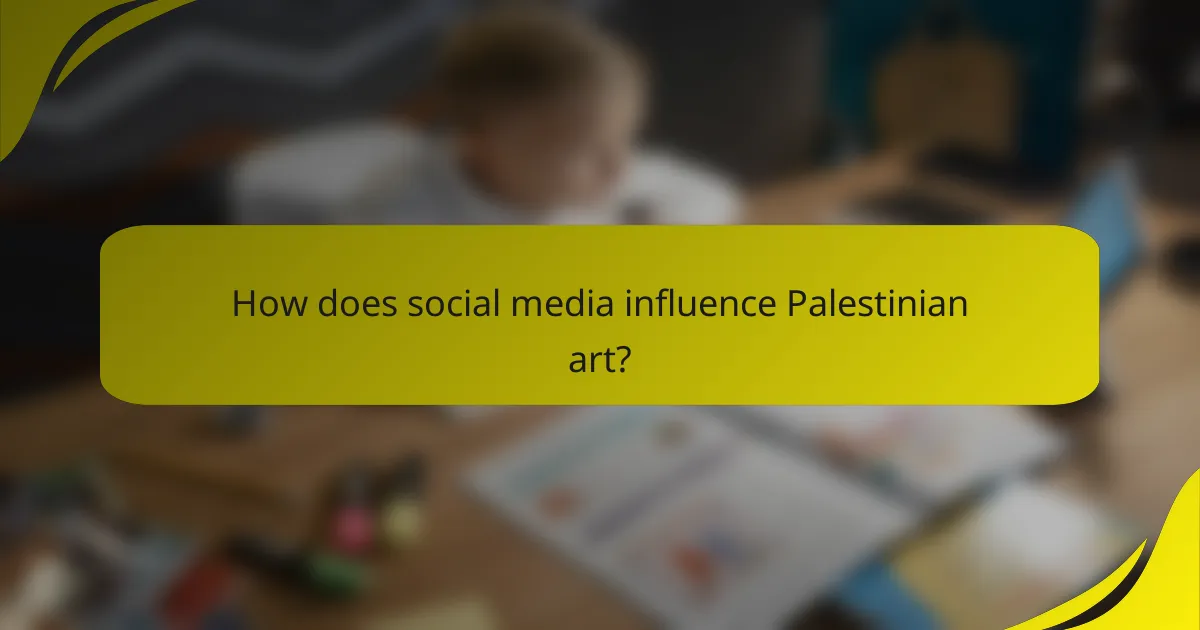
How does social media influence Palestinian art?
Social media significantly influences Palestinian art by providing a platform for expression and visibility. Artists can share their work with a global audience instantaneously. This visibility fosters cultural exchange and dialogue about Palestinian identity and experiences. Social media also allows for the rapid dissemination of artistic movements and styles. Platforms like Instagram and Facebook enable artists to engage directly with their audience. This engagement can lead to increased support and collaboration opportunities. Moreover, social media serves as a tool for activism, amplifying messages related to social and political issues. The use of hashtags can unify various artistic expressions under common themes. Overall, social media has transformed how Palestinian artists create, share, and interact with their work.
What platforms are most popular among Palestinian artists and why?
Social media platforms, particularly Instagram and Facebook, are most popular among Palestinian artists. These platforms allow artists to showcase their work to a global audience. Instagram’s visual-centric nature is ideal for sharing artwork. Facebook facilitates community-building and networking among artists. Additionally, platforms like YouTube are used for sharing video content and tutorials. These digital spaces offer accessibility and engagement opportunities. They enable artists to connect with supporters and potential buyers directly. The rise of these platforms reflects a shift in how Palestinian artists promote their work.
How does social media facilitate collaboration among artists?
Social media facilitates collaboration among artists by providing platforms for networking and communication. Artists can connect with peers, share ideas, and collaborate on projects in real time. Platforms like Instagram and Facebook allow artists to showcase their work and receive immediate feedback. This instant interaction fosters creative partnerships and joint ventures. Additionally, social media enables artists to organize virtual events and exhibitions, expanding their reach. According to a 2021 study by the International Journal of Arts and Technology, 78% of artists reported increased collaboration opportunities through social media. These platforms break geographical barriers, allowing artists from different regions to collaborate easily.
What impact does social media have on the visibility of Palestinian art globally?
Social media significantly enhances the global visibility of Palestinian art. Platforms like Instagram and Facebook allow artists to share their work widely. This accessibility connects Palestinian artists with international audiences. Social media also facilitates cultural exchange and dialogue. Artists can showcase their narratives and experiences directly. The use of hashtags increases discoverability and engagement. Many Palestinian artists have gained recognition through viral posts. This visibility challenges stereotypes and promotes understanding of Palestinian culture.
How do artists use social media to engage with their audience?
Artists use social media to engage with their audience by sharing their work and personal stories. They post images and videos of their art, providing insight into their creative process. This fosters a connection with followers and encourages interaction. Artists often utilize features like live streams and Q&A sessions to directly communicate with fans. They also create polls and ask for feedback to involve their audience in the artistic journey. Social media platforms enable artists to reach a wider audience beyond geographical limitations. According to a study by the Pew Research Center, 72% of adults use social media, making it an effective tool for engagement. Through consistent posting and interaction, artists build a community around their work.
What types of content resonate most with audiences on these platforms?
Visual content, such as images and videos, resonates most with audiences on social media platforms. Engaging visuals capture attention quickly and convey messages effectively. Content that tells a story or evokes emotion tends to perform well. Educational posts, including tutorials and behind-the-scenes looks, also attract interest. User-generated content encourages community involvement and enhances authenticity. Interactive content, like polls and quizzes, fosters engagement and participation. Posts that highlight cultural heritage and artistic expression have a unique appeal in the context of Palestinian art. These types of content align with audience preferences for creativity and connection.
How can social media campaigns enhance the promotion of Palestinian art?
Social media campaigns can significantly enhance the promotion of Palestinian art. They provide a platform for artists to showcase their work to a global audience. This exposure increases visibility and appreciation for Palestinian culture. Campaigns can engage users through interactive content, such as live streams and Q&A sessions. This interaction fosters a community around Palestinian art. Social media also allows for the sharing of stories behind the art, enhancing emotional connections. Hashtags and viral trends can amplify reach and engagement. According to a 2021 study by the Arab Center for Research and Policy Studies, social media has become a vital tool for cultural expression in the Arab world. This demonstrates the effectiveness of social media in promoting niche art forms like Palestinian art.
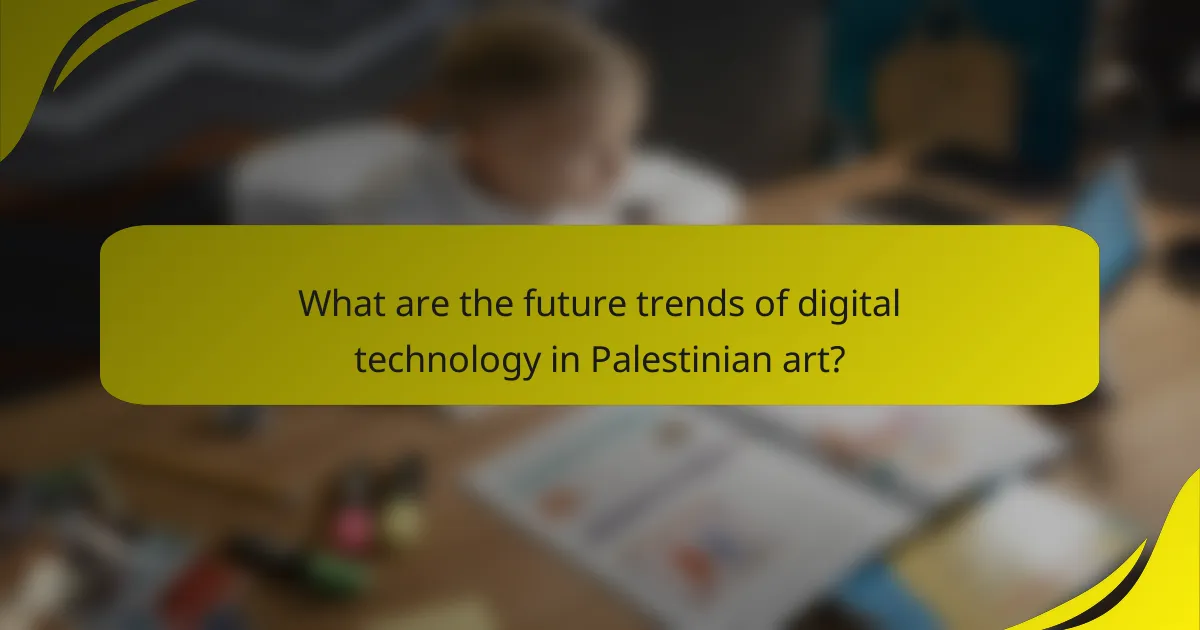
What are the future trends of digital technology in Palestinian art?
Future trends of digital technology in Palestinian art include increased use of virtual reality and augmented reality. Artists will likely create immersive experiences that engage audiences in new ways. Online platforms will facilitate global exposure for Palestinian artists. Social media will continue to play a crucial role in promoting their work. Digital storytelling will become a prominent method for conveying cultural narratives. Collaborations with tech companies may enhance artistic expression through innovative tools. Furthermore, online learning will expand educational opportunities for aspiring artists. Overall, these trends will foster a dynamic evolution of Palestinian art in the digital landscape.
How might emerging technologies reshape the artistic practices in Palestine?
Emerging technologies are likely to reshape artistic practices in Palestine by enhancing accessibility and visibility. Digital platforms enable Palestinian artists to reach global audiences. Virtual exhibitions allow for the presentation of art without geographical limitations. Online learning resources provide artists with new skills and techniques. Social media facilitates community building and collaboration among artists. Technologies like augmented reality can create immersive art experiences. Additionally, digital tools can help preserve and promote Palestinian culture. These advancements contribute to a dynamic evolution of artistic expression in the region.
What role will augmented reality play in future art exhibitions?
Augmented reality (AR) will enhance visitor engagement in future art exhibitions. It will allow viewers to interact with artworks in immersive ways. AR can overlay digital information onto physical art, providing context and deeper understanding. This technology can create interactive experiences that attract diverse audiences. For example, AR can animate static pieces or provide artist commentary. Studies show that interactive elements increase visitor retention and satisfaction. According to a report by the International Council of Museums, 70% of visitors prefer exhibitions that use digital enhancements. Thus, AR will play a crucial role in modernizing art exhibitions and enriching the viewer experience.
How can blockchain technology impact the sale and ownership of digital art?
Blockchain technology can significantly impact the sale and ownership of digital art. It provides a decentralized ledger that verifies ownership and provenance. This ensures that artists receive recognition and royalties for their work. Smart contracts on the blockchain automate sales and royalty payments. They execute transactions when predefined conditions are met. This reduces the need for intermediaries, lowering transaction costs. Additionally, blockchain enables fractional ownership of digital art. This allows multiple investors to own a share of a piece. The transparency of blockchain also enhances trust in the art market. As a result, it can lead to increased sales and investment in digital art.
What practical steps can artists take to leverage digital technology effectively?
Artists can leverage digital technology effectively by utilizing online platforms for learning and collaboration. They should engage in virtual workshops to enhance their skills. Participating in online art communities can provide valuable feedback and networking opportunities. Artists can also create digital portfolios to showcase their work to a broader audience. Utilizing social media for promotion can increase visibility and engagement with potential buyers. Additionally, hosting virtual exhibitions allows artists to reach global audiences without geographical constraints. These steps can significantly expand their reach and impact in the art world.
What best practices should Palestinian artists follow when using digital platforms?
Palestinian artists should prioritize authenticity and cultural representation when using digital platforms. They must showcase their unique narratives and experiences through their art. Engaging with audiences through storytelling enhances connection and understanding. Utilizing high-quality visuals is essential for attracting attention in a crowded digital space. Consistency in posting helps maintain audience interest and engagement. Artists should leverage social media analytics to understand audience preferences and tailor content accordingly. Collaborating with other artists can expand reach and foster community. Lastly, protecting their intellectual property is crucial in the digital landscape to prevent unauthorized use of their work.
How can artists protect their work in the digital landscape?
Artists can protect their work in the digital landscape by using copyright laws and digital rights management (DRM). Copyright laws automatically protect original works upon creation. Artists should register their work with the appropriate copyright office for additional legal protection. Digital rights management tools help control how digital content is used and distributed. Watermarking images can deter unauthorized use by making it clear who owns the work. Additionally, using licenses, such as Creative Commons, allows artists to specify how others can use their work. Monitoring online platforms for unauthorized use can help artists take action against infringement. These steps collectively safeguard artists’ rights and their creative output in the digital environment.
The main entity of this article is digital technology and its impact on Palestinian art. The article examines how digital tools, such as social media, online learning platforms, and virtual exhibitions, have transformed the artistic landscape for Palestinian artists by enhancing global visibility, facilitating collaboration, and expanding access to resources. It discusses the key digital tools influencing artists, the significance of online learning in skill development, and the challenges faced in accessing these resources. Additionally, it explores the role of social media in promoting Palestinian art and the future trends of digital technology in the art scene.
